|
November 6, 2022
Dear Neighbors and Friends,
Happy Almost Election Day! I hope that you and your loved ones are doing well, staying healthy, and looking out for your neighbors and friends during this past week.
In tonight’s newsletter you’ll find some comments and perspective on the election, along with another work group that I’ve convened in advance of the next session—this one working on the next phase of our efforts to create pathways for former offenders to move on with their lives and gain employment.
On the COVID front we see another week with mixed results and little change overall. Percent positivity, ICU hospitalizations, and reported deaths have gone up from last week; reported infections and regular hospitalizations have gone down.
For the fifth week in a row, all of Oregon’s counties remain at Low or Moderate risk. Wastewater analysis is showing only small changes from last week, with no increases from last week.
We did receive a new report and forecast from OHSU on Wednesday. It shows that overall, the predicted fall/winter surge does not appear to have hit Oregon yet. As a result, and based on what they’re seeing elsewhere, the forecasters are predicting a much more modest COVID wave coming to Oregon over the next month. More on that below.
Until next time, please do your best to stay healthy and safe. And let me know if you have any questions or thoughts about anything in this week’s newsletter.
Election Countdown
As I write this, we’re a little over 48 hours from the election deadline. If you haven’t yet voted, it’s definitely time to do so! If you’ve misplaced your ballot or if it’s damaged, contact your county elections office. They will issue you a new ballot and inactivate your original ballot.for a replacement. If you’ve misplaced your Voters Pamphlet, go here and click on the language of your choice.
Prior to this year, it would have been risky at this point for you to put your ballot in the mail in most of the state. That’s because in the past ballots needed to be RECEIVED at an elections office by 8 pm on Tuesday. Now, however, as a result of legislation that we passed last year (HB 3291 https://olis.oregonlegislature.gov/liz/2021R1/Measures/Overview/HB3291), your ballot no longer needs to be received by the date: it needs to be dropped off in an official ballot drop box by 8 pm that day or POSTMARKED before the end of November 8.
As has been the case for the last few years (thanks to 2019’s SB 861), all mail ballots are postage-paid.
A word of caution: If you’re putting your ballot in a mailbox, be sure to check the pickup time to make sure there’s enough time for it to be collected and postmarked that day. If there isn’t, you should drop it off at an official drop box.
If you have voted and are wondering if it’s been received (e.g., you may still be receiving campaign literature in the mail), you can easily track your ballot at the Elections Division’s MY VOTE website. I just checked on mine and confirmed that it was received on October 31, a couple of days after I put it in the mail. (Actually, I had signed up for text messages and had already received confirmation.)
I will say that I’m proud to live in a state that’s committed to increasing voter participation (and even prouder to have been involved in all the legislative efforts to remove unnecessary barriers to participation for more than a decade). Our democracy depends on people feeling that their vote is needed and wanted.
The downside of this latest change, allowing the ballot to be put in the mail on election day, is that we may find ourselves not knowing the outcomes of some elections for a number of days. Many of these races are shaping up to be very close, and late-arriving ballots may well make the difference. County elections will be accepting ballots with the proper postmarks up to and including 7 days after the election.
So, it’s going to require patience (and optimism!) from all of us.
The good news is—even if we may not know the ultimate outcome of all the elections for some days after the election, at least the ads and mailers will stop on that day. BIG SIGH OF RELIEF!!!
Those of us who have been out there on the doors (or phoning or texting) getting out the vote can enjoy some well-deserved rest. But special thanks must go to those who stepped up and “entered the fray” to run for office. Whether or not they turn out to have been successful, we owe them and their families huge gratitude for their months of sacrifice. However it turns out, they have become part of our state’s history.
Moving Forward on Juvenile Expunction
One of the most difficult things about this election season is the way that political ads have played upon fears about crime and safety for political ends. It’s a shame. During both the Trump and Biden administrations we were seeing bipartisan agreement both at the national and state levels that we need to give ex-offenders real pathways to reentry after they’ve served their time or otherwise paid for their offenses and shown clear evidence of rehabilitation. The evidence is clear that removing these “collateral consequences” results in a reduction in recidivism, ultimately keeping us safer. Unfortunately, that evidence-based approach ended with the onset of the campaign season.
But as we move past this season and into the next legislative session, I’m committed to seeing us continue to make progress in removing barriers where they are not needed, so that the formerly incarcerated receive the education and skills training that they need to enter the workforce (where we need them).
In 2021 we were able to pass SB 575, which allowed many formerly juvenile offenders to have their records automatically expunged after they had reached the age of 18 and had not had any additional offenses. The product of a work group that involved representatives from the courts, juvenile agencies, Oregon Youth Authority, district attorneys, law enforcement, and juvenile advocates, the bill took a first step in clearing records by focusing on those youth who never had to go to court for their offenses but still found themselves blocked from housing, employment, and education because of their records.
For more explanation, here is my floor speech when I introduced the bill to the Senate in 2021. Happily, SB 575 ultimately passed both chambers on strong bipartisan votes.
As you’ll see from the floor speech, our plan at the time was to use this first swath of offenders (the largest out there) as a pilot project to try out the process of making expunction automatic, and then move on to those with misdemeanor and other offenses if the pilots proved successful. I’ve reconvened the work group, and we’re now working on just that.
We’ve learned that the first phase has indeed gone well—more than 2,500 young Oregonians have already had their records automatically expunged since the bill went into effect in January, and we’re on track to hit 4,000 by the end of the year.
In working on next steps, we’re advised by the Justice Action Network, a national think tank that has worked with a number of states (Republican and Democratic alike) to update their juvenile justice statutes. Here’s a PowerPoint from the presentation they gave us last week. It provides a national perspective of what other states are doing to make it easier for young people to move on.
Let me know if you have any comments or questions. I’ll keep you abreast of the work of the work group as we (hopefully) move forward in the next session.
ON THE COVID FRONT
Weekly Data Report:
OHA now updates and reports COVID metrics once a week, on Wednesdays.
Here are the last set of daily results, for this past week from 10/2722 through 11/2/22.
As you’ll see, this week’s report is a mix of slight increases, decreases, and in one case no change. It appears to affirm the observation that you’ll find in the new forecast from OHSU—that we are now experiencing a plateau that will soon transition to a brief wave in October and the first part of November.
- The 7-day average for new infections went down again last week, from 398 to 360.reported infections per day. The number of new cases is again likely an undercount, as many people are using home tests to determine their infection status but are not reporting those results.
- Average test positivity for the last week rose slightly 6.9% vs. the previous week’s 6.6%. Again, this number skews high because it likely reflects a higher proportion of people showing COVID symptoms (and thus going in for a test, rather than self-testing).
- On Wednesday there were 230 COVID-19-related hospitalizations statewide, dropping from 238 last Wednesday. Hospitalizations are now our best indicator of disease spread. Again, however, most of these hospitalizations are not in and of themselves due to COVID—more than half are those who tested positive after having been admitted for other reasons.
- The number of COVID patients in Oregon’s ICUs on Wednesday was 33, increasing from last week’s 31. These are the most serious COVID infections.
- There were 46 COVID-19-related deaths reported during the last week, up from the previous week’s 35. Many of these reported deaths actually occurred in earlier weeks but were just reported to the state. The newsletter’s final graph shows when the deaths actually occurred, and you’ll see that the number of COVID deaths each day actually remains low.
Weekly County Report: No High Risk Counties for the Fifth Week in a Row
The CDC assigns risk levels based on a combination of the number of new COVID cases and the number of people in hospital for COVID.
According to the CDC Daily Counter (updated each Thursday), none of Oregon’s 36 counties is currently at High Risk. All are either at Low Risk or Medium Risk.
Six Oregon counties (up from four have reported infection rates that place them in the Medium Risk category: Baker, Klamath, Lake, Malheur, Union, Wallowa,
The remaining 30 Oregon counties (up from 31 last week) are at Low Risk: Benton, Clackamas, Clatsop, Columbia, Coos, Crook, Curry, Deschutes, Douglas, Gilliam, Grant, Harney, Hood River, Jackson, Jefferson, Josephine, Lane, Lincoln, Linn, Marion, Morrow, Multnomah, Polk, Sherman, Tillamook, Umatilla, Wasco, Washington, Wheeler, and Yamhill.
We can also track the cases, deaths, and test positivity rates for each county at this website.
The three Portland-area counties showed a mix of increases and decreases in positivity rates from the previous week. Clackamas County is 9.2%, a big jump from last week’s 5.9%. Multnomah County is 6.8%, up from last week’s 5.5%. Washington County has gone to 6.2%, down from 6.7%.
Remember that these are all based on reported test results, and so are more likely to be a little higher than the total percent positivity (i.e., if one were to include all tests taken).
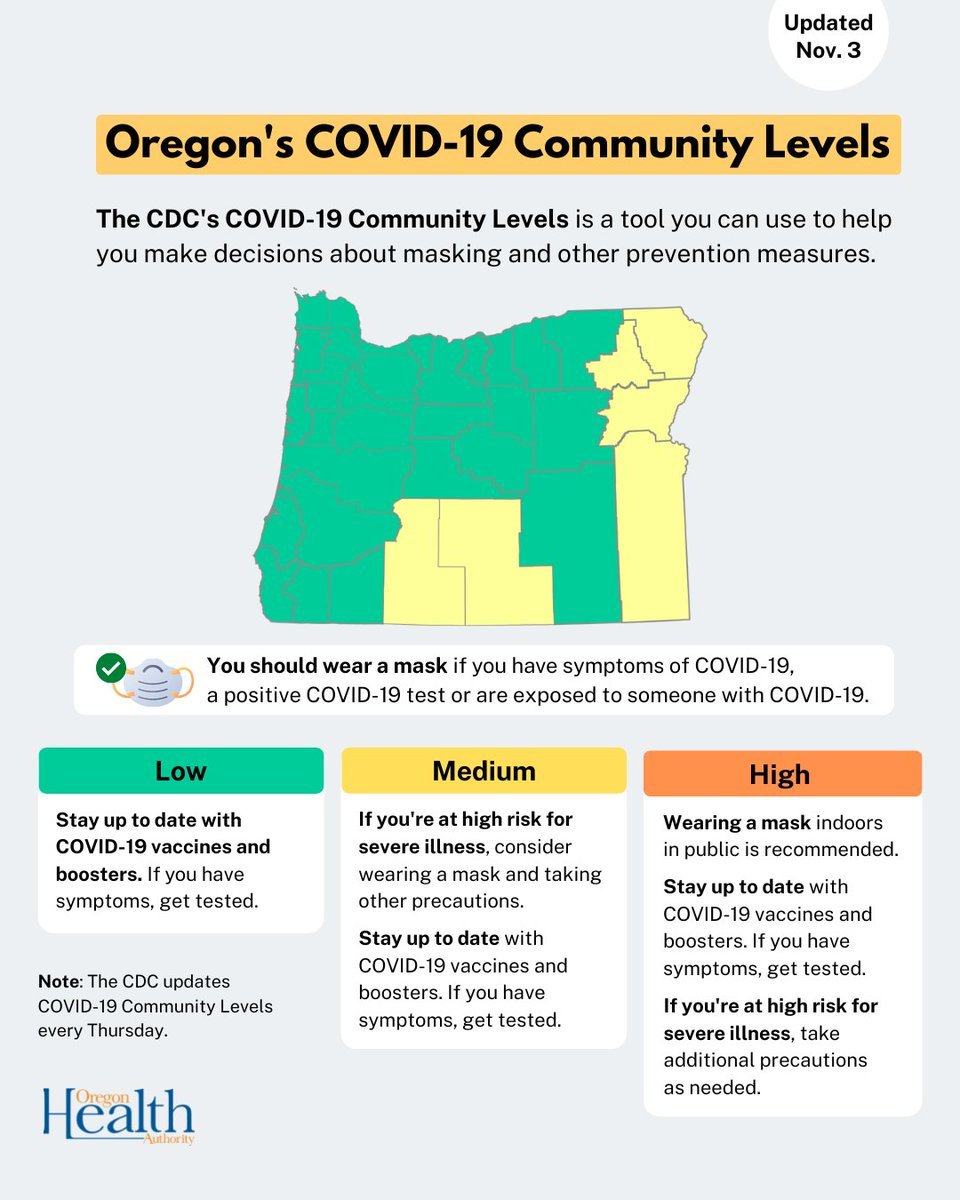
This Week’s Wastewater Monitoring Report: Little Change from Last Week
With testing reports giving us just a fraction of infections out there, wastewater monitoring has become a more reliable indicator of the amount of virus in cities around the state. That report is updated each week.
This week’s report shows little change from last week. 91% of the cities tested showed no change. Nine percent showed decreased viral load from the previous week. No cities showed increases.
OHSU Forecast Now Predicting a Much Smaller Wave
Another OHSU Forecast Report was released on Wednesday. It uses data provided by OHA and others that project how fast the virus may spread in the population and provides projections on possible outcomes, including infection rates and impacts on hospital capacity. The lead author is Dr. Peter Graven, Director of OHSU’s Office of Advanced Analytics.
This week’s forecast shows a much smaller wave than previous forecasts, partly due to less impacts from waning immunity. The maximum of the upcoming wave is now expected to be 280 on 12/4/2022, which is more than 300 fewer than the previous forecast of 630. This downward revision is due to what we’re seeing here in Oregon (the expected surge, which was supposed to start mid-October, has not yet begun), along with trends observed in other regions and the implication.
Here are some details:
- As of Nov. 2, 230 people were in Oregon hospitals. The number has been relatively flat over the prior eight weeks.
- COVID hospitalizations appear moderate in the Northeast and Europe. Hospitalizations in New England and in Europe appear to have crested already, much earlier than anticipated. This bodes well for a mild initial seasonal wave in Oregon.
- On the other hand, RSV is surging across the United States and in states next to Oregon (Washington and California). RSV is lagging in Oregon but will likely pick up quickly. RSV is expected to peak higher than average and earlier than usual, based on national trends.
- Flu is starting much earlier than usual across the South.
- COVID levels in wastewater have been relatively flat across Oregon and generally low elsewhere in the U.S.
- Visits to the emergency department for COVID-like illness remain flat.
- Test positivity also remains flat.
- As of Oct. 26, 5% of occupied ICU beds in Oregon had COVID patients (same as 3 weeks ago).
- As of Oct. 27, three children were in the hospital (vs. 9 three weeks ago).
- Hospitalizations in the Northeast and Europe have peaked at lower levels than expected. Drops in immunity have been less significant or slower than expected.
- New variants are not having a notable effect. While many variants are becoming more common, none are at the level of delta or omicron.
- The fact that we’re now looking at a smaller wave than predicted in the previous forecast is in part due to less impacts from waning immunity.
- The number of deaths per day is expected to increase very slightly in the coming wave.
COVID Q & A from OHA’s Dr. Cieslak (from OHA weekly newsletter)
Dr. Paul Cieslak, OHA senior health advisor and medical director, Communicable Diseases and Immunizations, answered this week’s questions.
Q: Is Novavax approved as a booster after a Johnson & Johnson series of two? Last injection received was Nov. 15, 2021. – Janice, Hillsboro
A: “The Johnson & Johnson (J&J) vaccine is a single-dose primary series. If you are immunocompromised, you may have received an ‘additional dose’ of J&J as part of your primary series. Regarding Novavax boosters, they are authorized only for persons 18 years of age and older who have not previously received any booster dose, if it’s been at least six months since completing the primary series and if the person refuses to receive an updated mRNA booster (Pfizer or Moderna). Based on what you've written, you are eligible for the Novavax booster as long as the ‘series of two’ you referenced includes a second J&J dose authorized for people with compromised immune systems.”
Q: For prevention of a COVID-19 infection, experts said you had to remain indoors with a carrier for 15 minutes to become infected. With the new Omicron variants, is that exposure time still relevant? How is that association time affected if both people are wearing masks? – William, Lane County
A: “We still define 'close contact' as living with, having contact with the infectious secretions of, or being within six feet of, a person with COVID-19 for at least 15 minutes. You’re correct in feeling that because the new variants are so contagious, and the infection so widespread, it is quite possible to contract COVID-19 without meeting this definition of 'close contact.' However, we still advise people who meet this definition to watch for symptoms, consider getting tested five days after exposure, avoid contact with high-risk people for 10 days after exposure and wear a well-fitting mask when around others.”
Additional COVID Updates and Links
- Here’s the latest on COVID in Oregon from the Oregonian, including reporting on the new, more optimistic forecast from OHSU (see above).
- If you have a stronger reaction to the COVID vaccine, does that mean that you’ll have stronger immunity? Conversely, does less of a response mean less immune response? It’s not yet clear. But it appears that even with less of a response, you’ll have plenty of immunity. Here's more.
- From Scientific American, discussion of why relatively few people have received the new bivalent vaccine, and why those who have not are making a mistake.
- New data released by Pfizer/BioNTek show that the new bivalent boosters are substantially more effective than the earlier monovalent boosters.
- Here’s more on that announcement. Here's more on that announcement.
- And early findings from v-safe and VAERS (Vaccine Adverse Event Reporting System) show that the new bivalent vaccines are similar to the earlier monovalent boosters in being quite safe.
-
A new study from Taiwan shows that COVID aerosols can move through floors and walls.
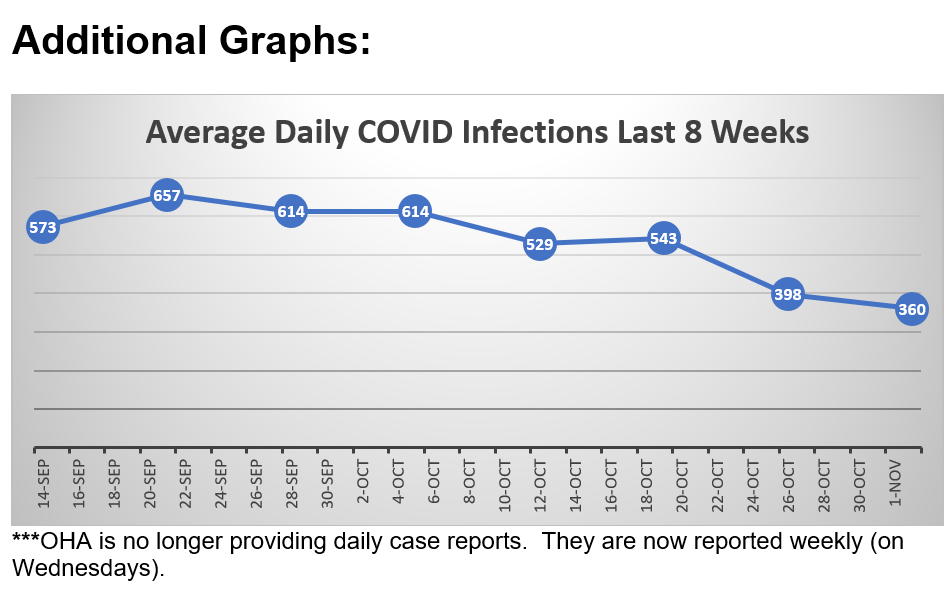
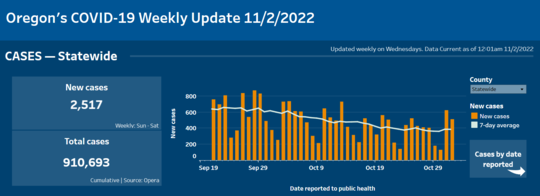

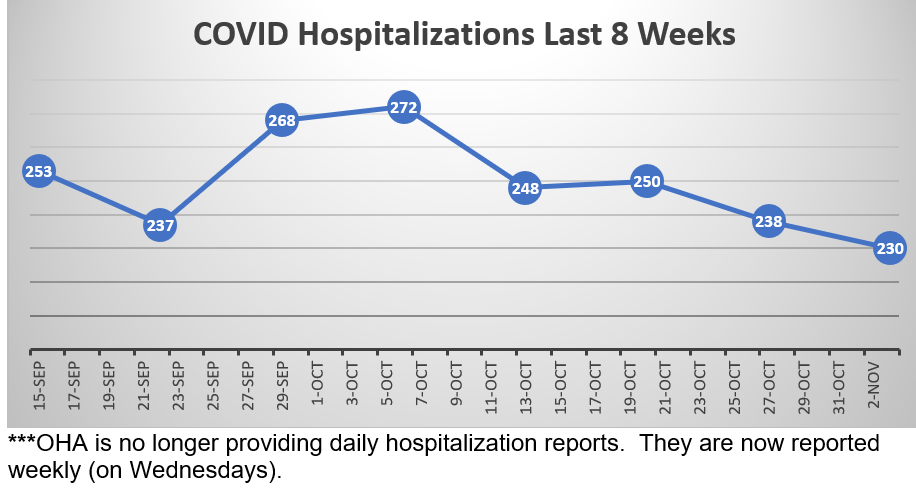
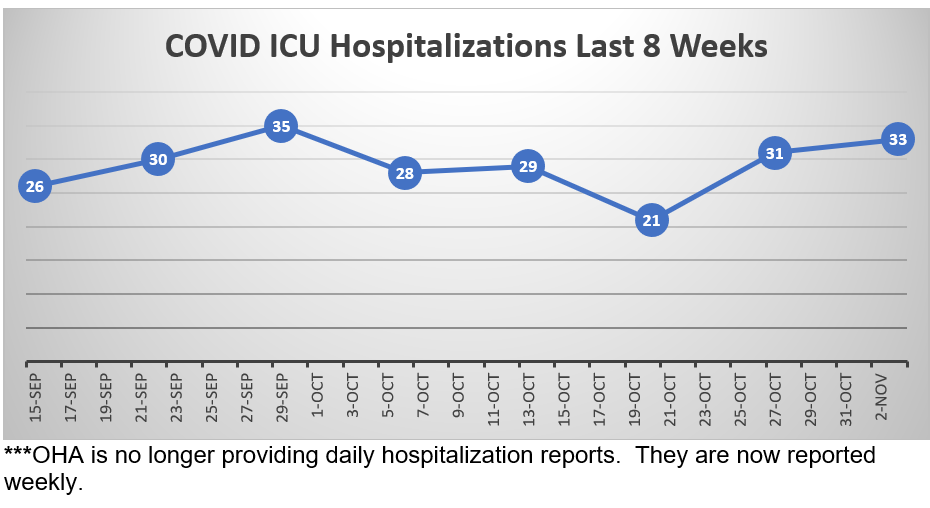

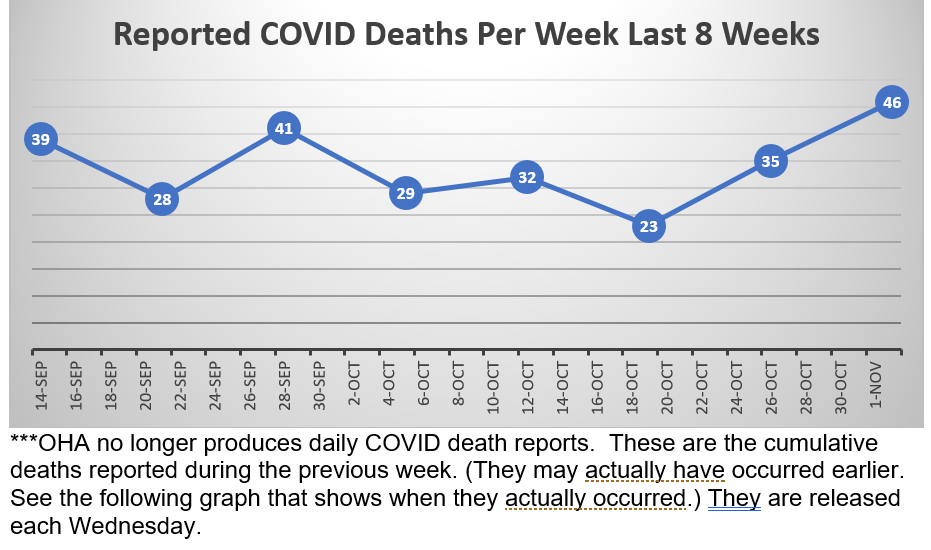

Here again are some COVID resources that you will find useful:
If the above links are not providing you with answers to your questions or directing you to the help that you need, please consider me and my office to be a resource. We’ll do our best to assist you or steer you in the right direction.
Want to See Past Newsletters?
If there was COVID-related information in a past newsletter that you want to go back to, but find you’ve deleted it, you can always go to my legislative website (senatordembrow.com), click on “News and Information,” and you’ll find them all there. Also, if someone forwarded you this newsletter and you’d like to get it directly, you can sign up for it there.
Best,
 Senator Michael Dembrow
District 23
email: Sen.MichaelDembrow@oregonlegislature.gov
web: www.senatordembrow.com
phone: 503-281-0608
mail: 900 Court St NE, S-407, Salem, OR, 97301
|